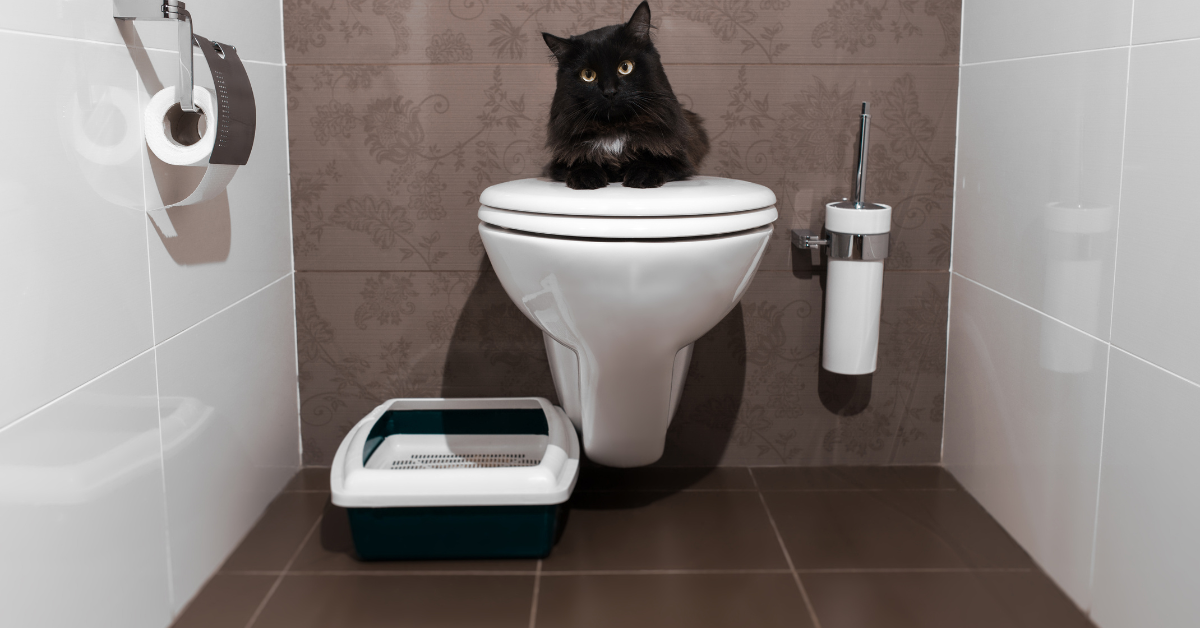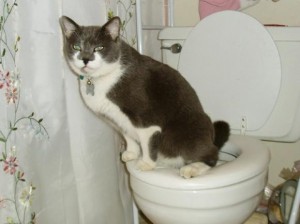Crucial Points Regarding Flushing Animal Waste Down the Toilet
Crucial Points Regarding Flushing Animal Waste Down the Toilet
Blog Article
Right here down the page you can get a bunch of reliable insights involving Should you flush animal waste down the toilet.

When it comes to throwing away waste, specifically animal waste, many people frequently resort to the practical alternative of flushing it down the toilet. However, this seemingly simple solution can have significant consequences for the setting and public health. In this post, we'll check out why flushing animal waste down the toilet is a negative idea and supply alternative approaches for proper disposal.
Introduction
Appropriate garbage disposal is critical for maintaining environmental sustainability and public health. While it may seem safe to purge animal waste down the commode, it can cause various concerns, both for the atmosphere and human wellness.
Threats of flushing animal waste
Ecological impact
Purging animal waste introduces unsafe microorganisms and virus into waterways, which can adversely influence water environments. These virus can infect water sources and injury marine life, interrupting fragile environments.
Public health issues
Pet waste contains harmful microorganisms such as E. coli and Salmonella, which can position major wellness threats to humans. Purging pet waste down the commode can contaminate water products, resulting in the spread of illness and infections.
Alternatives to flushing
Rather than flushing pet waste down the commode, there are several alternative disposal methods that are more environmentally friendly and sanitary.
Composting
Composting pet waste is an environment-friendly way to dispose of it. By composting, raw material is broken down into nutrient-rich soil, which can be made use of to fertilize gardens and plants.
Landfill disposal
Throwing away pet waste in a land fill is another choice. While not as eco-friendly as composting, it is a safer option to flushing, as it prevents the contamination of water sources.
Pet waste disposal systems
There are specific pet waste disposal systems available that safely and hygienically take care of animal waste. These systems usually use enzymes to break down waste and eliminate odors.
Actions to proper animal garbage disposal
To guarantee proper disposal of animal waste, follow these steps:
Scooping and landing waste
On a regular basis scoop and bag pet waste making use of eco-friendly bags. This prevents waste from contaminating the atmosphere.
Using marked waste bins
Dispose of bagged animal waste in designated waste bins, such as compost containers or garbage dump bins. Prevent flushing it down the commode in any way prices.
Cleaning up can and family pet locations regularly
Regularly clean litter boxes and animal locations to prevent the accumulation of waste and germs. Use pet-safe cleansing products to maintain health.
Benefits of appropriate disposal approaches
Adopting proper disposal approaches for animal waste supplies numerous advantages:
Reduced environmental pollution
Appropriate disposal methods minimize the risk of environmental pollution, shielding waterways and communities from contamination
Decreased danger of water contamination.
By preventing flushing pet waste down the commode, the risk of water contamination is substantially decreased, guarding public health.
Enhanced sanitation and health
Proper disposal techniques advertise better sanitation and health, producing a much safer environment for both human beings and pets.
Conclusion
To conclude, flushing animal waste check here down the commode is harmful to the setting and public health. By embracing alternate disposal approaches and following correct waste monitoring practices, we can reduce the adverse influence of pet waste and add to a cleaner, much healthier planet.
What To Do With Dog Poo – The Do's And Don'ts Of Disposing Of Faeces
Dog poo bins
Some councils provide dedicated dog waste bins in popular dog-walking areas that can take dog poo that has been bagged but you can legally dispose of dog waste in any public litter bin, as long as it is securely bagged. This also applies to your wheelie bin at home.
Do not flush
Water companies do not recommend flushing dog faeces down the toilet because certain parasites can survive the water processing treatment and are potentially harmful to humans. You should also never consider flushing dog poo that has been bagged down the toilet as the bags will not break down and instead create severe blockages in the sewage system.
In the woods
The Forestry Commission promotes a ‘stick and flick’ method for dealing with waste in the woods. This means finding a stick and using it to flick any poo from off the path so that it is out of the way of other walkers. You could also bury it as long as it is not in an area where there might be livestock.
Livestock
Parasites found in dog poo can be transmitted to livestock if they inadvertently eat infected faeces that has been left on grazing land. This could result in the death of sheep or abortion in cattle so you should always make sure you pick up your dog’s waste in fields where livestock could be present.

Regularly clean litter boxes and animal locations to prevent the accumulation of waste and germs. Use pet-safe cleansing products to maintain health.
Benefits of appropriate disposal approaches
Adopting proper disposal approaches for animal waste supplies numerous advantages:
Reduced environmental pollution
Appropriate disposal methods minimize the risk of environmental pollution, shielding waterways and communities from contamination
Decreased danger of water contamination.
By preventing flushing pet waste down the commode, the risk of water contamination is substantially decreased, guarding public health.
Enhanced sanitation and health
Proper disposal techniques advertise better sanitation and health, producing a much safer environment for both human beings and pets.
Conclusion
To conclude, flushing animal waste check here down the commode is harmful to the setting and public health. By embracing alternate disposal approaches and following correct waste monitoring practices, we can reduce the adverse influence of pet waste and add to a cleaner, much healthier planet.
What To Do With Dog Poo – The Do's And Don'ts Of Disposing Of Faeces
Dog poo bins
Some councils provide dedicated dog waste bins in popular dog-walking areas that can take dog poo that has been bagged but you can legally dispose of dog waste in any public litter bin, as long as it is securely bagged. This also applies to your wheelie bin at home.
Do not flush
Water companies do not recommend flushing dog faeces down the toilet because certain parasites can survive the water processing treatment and are potentially harmful to humans. You should also never consider flushing dog poo that has been bagged down the toilet as the bags will not break down and instead create severe blockages in the sewage system.
In the woods
The Forestry Commission promotes a ‘stick and flick’ method for dealing with waste in the woods. This means finding a stick and using it to flick any poo from off the path so that it is out of the way of other walkers. You could also bury it as long as it is not in an area where there might be livestock.
Livestock
Parasites found in dog poo can be transmitted to livestock if they inadvertently eat infected faeces that has been left on grazing land. This could result in the death of sheep or abortion in cattle so you should always make sure you pick up your dog’s waste in fields where livestock could be present.

We were shown that editorial about Don't Flush Your Pets Poo Down The Loo, Vet Warns from a pal on our other domain. Are you aware of somebody who is fascinated by Why you should never flush dog poop down the toilet? Feel free to promote it. Thanks for taking the time to read it.
Call Report this page